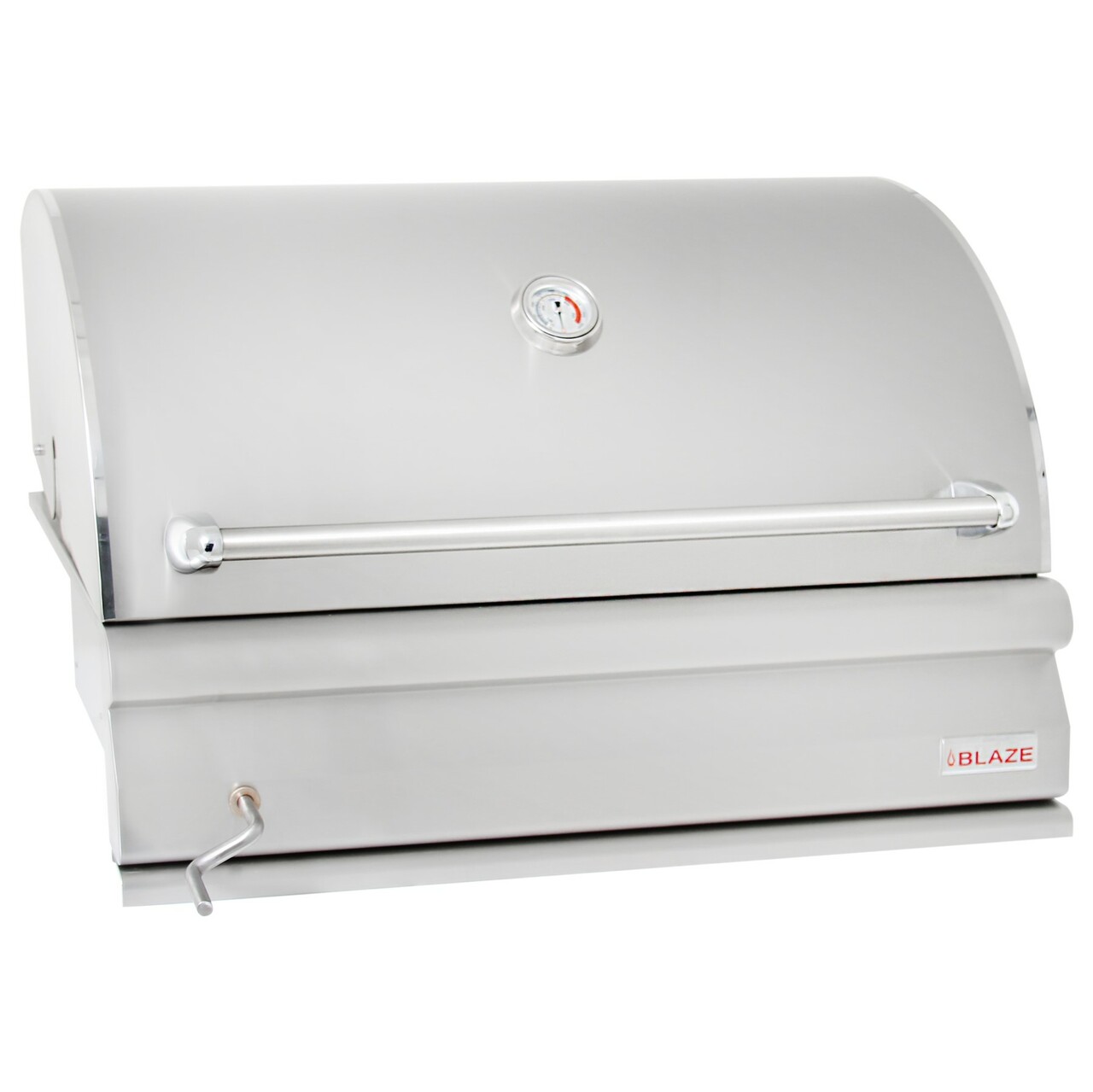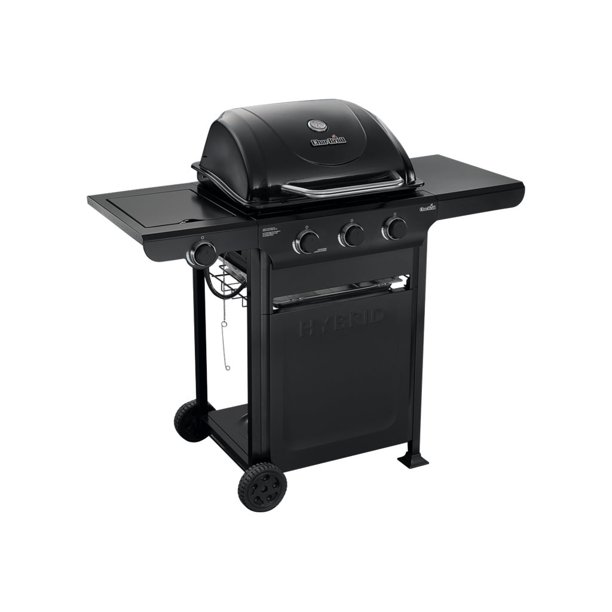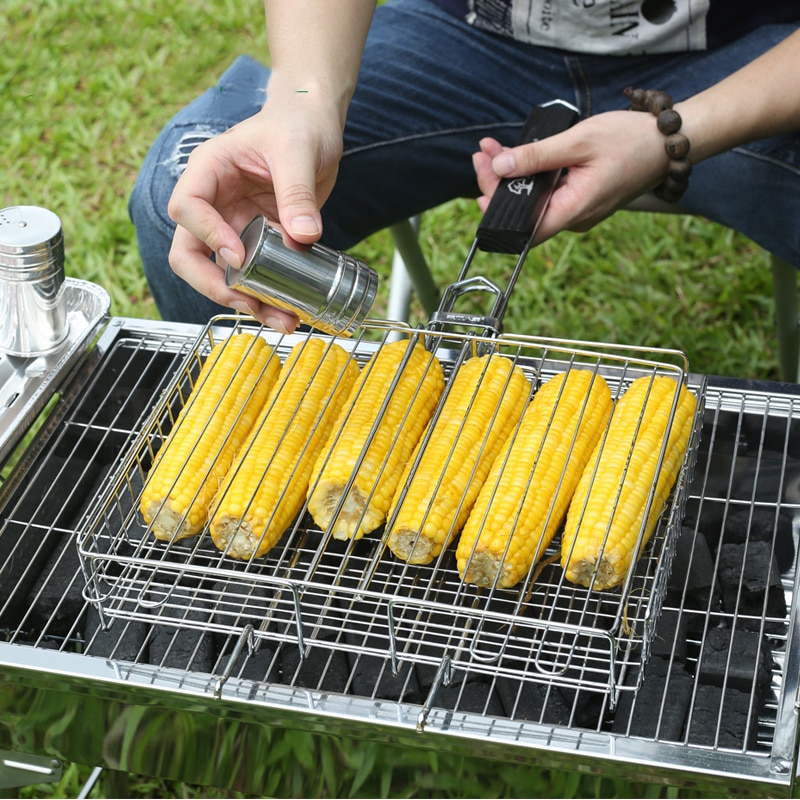
Direct heat grilling is best done with a second-level grid that is higher than your main cooking grid. This allows you cook delicate and small foods with minimal cooking time. Temperature should be between 250°F and 350°F. At least once per day, banked coals need to be topped-up. Indirect heat grilling is more time-consuming than direct heat grilling but offers the best flavor.
Briquettes are necessary to add indirect heat to your grill at least once an hour. This is crucial for even heating and ensuring that the meat cooks to your desired temperature. A small shovel can be used to add briquettes. This is done by inserting the handle through the side of the cooking grates. Place 30 or more grey-ash-covered, charcoals on either side of the grill to get the right temperature. To catch fat and juices, you can place a drip tray between the charcoal and the grate.

Another method for indirect heat grilling is to arrange the coals in a circular arrangement. This is the most used method and is often used to "smoke” meat. It adds more flavor to the meat. Wood chips should be soaked for at least 30 minutes prior to adding them to the charcoal. This method is difficult and time-consuming. It is not recommended to be used by beginners. There are two types of heat grilling: direct or indirect.
Prepare your grill using non-stick spray to use indirect heat. Place the meat onto the middle grate. The charcoal grate on the other side can be used for indirect heat cooking. To avoid charring, place a foil drip pan on the charcoal grate. It's important to remember that this technique requires longer cooking times than direct heat grilling.
Indirect heat cooking is another way to prepare food over a coal fire. There are two main differences: the type of heat. Indirect heat means that food is cooked directly over a heat source. Direct heat is when the food is heated directly by the flame. The food won't be cooked directly at the heat source. However, it will retain its moisture and tenderness. The food will be tender and evenly browned as it cooks.

Indirect heat grilling charcoal is a method of cooking food that does not come into direct contact with heat sources. This method is ideal for larger pieces of meat and fish such as cedar plank fish. This method cooks food evenly and at lower temperatures because it is not directly placed over the heat source. You can use this method for chicken, fish, and other types of meat. You should always monitor the internal temperature.
FAQ
Where can you buy high quality kitchen equipment
Online shopping is a great way to purchase quality kitchen equipment. There are many websites where you can shop for all kitchen tools. However, it is important to check reviews and ratings before making any purchase of kitchen equipment. Ask other owners if they have any recommendations.
What should a beginner chef learn?
An easy dish to start with is pasta, rice, or soup. If you want to learn how to cook, go for a recipe book or YouTube video. Cooking with friends is much more enjoyable. Have a group of friends cook, or cook together.
What skills is required to attend culinary school
You must have the ability to cook well and work under pressure. Cooking classes can be taken at high schools and community colleges to learn the basics of cooking. After mastering the basics, you'll be able to apply for a job at a catering or restaurant.
What can I learn about cooking?
Cooking classes are available throughout the country. Many schools offer classes in baking, pastry, wine tasting, and more. If you're interested in learning more about baking, you can either enroll at a community college or vocational school. Or you can attend a private class.
Statistics
- On average, chefs earn $58,740 a year, according to the BLS. - learnhowtobecome.org
- under 10 Kids have been taught that there is special food just for them, and Fiese says that 10 percent of kids will throw a tantrum if they don't get the food they want. (washingtonpost.com)
- In the United States, the category is estimated at $23.2 billion annually and is growing faster than the market. (washingtonpost.com)
External Links
How To
How to make a perfect eggroll
Omelets are my favorite breakfast dish. How can you make them perfectly? I have tried many different recipes and methods, but none of them work. So I am sharing some tips and tricks today to help you make fluffy, delicious omelets every morning.
Before we start making omelets, let's remember that eggs are temperamental. Eggs must be purchased fresh, preferably organic, and kept chilled until ready for cooking. The yolks and whites will not form properly if they aren't kept cold enough. This will make your omelets appear strangely colored. If you intend to cook your eggs immediately, it's best to use room-temperature egg.
You might also try separating the egg before adding to the pan. The yolk and white should not be mixed together as this can cause the omelet's curdle.
You might burn the bottom of the egg if you place the egg directly on the stovetop. This could ruin the texture of your omelet. Instead, heat the egg for 10 seconds in the microwave before placing it in the pan. The microwave heat cooks the eggs just right without overcooking them.
Let's now talk about mixing eggs. When mixing eggs, it is important to thoroughly beat them. To do this, take the bowl from the mixer and flip it upside-down. Next, shake the bowl vigorously. The egg will be thoroughly mixed in the bowl as the air is whipped.
Now comes the fun part: adding the milk to your mixture. The first step is to pour half of the milk in the beaten eggs. Next, fold the eggs into the remaining milk. If you still see streaks of eggs, don't worry. These streaks will disappear once the omelet has been turned over.
After you have folded the eggs, heat the oil in a pan over medium heat. Once the oil has started to sizzle, turn the heat down to low. Once the oil begins to heat, add 1/4 cup butter and swirl the pan to coat it. Now carefully crack open the lid of the pan and sprinkle salt into the pan. A pinch of salt will help prevent the omelet from sticking to the pan.
Once the omelet has formed, cover the pan again and wait for the top side to set completely. Flip the omelet over using a spatula or flip the pan upside down. Cook the other side for about a minute. Take the omelet out of the pan and immediately serve.
This recipe works best with whole milk, but skimmed milk also works.